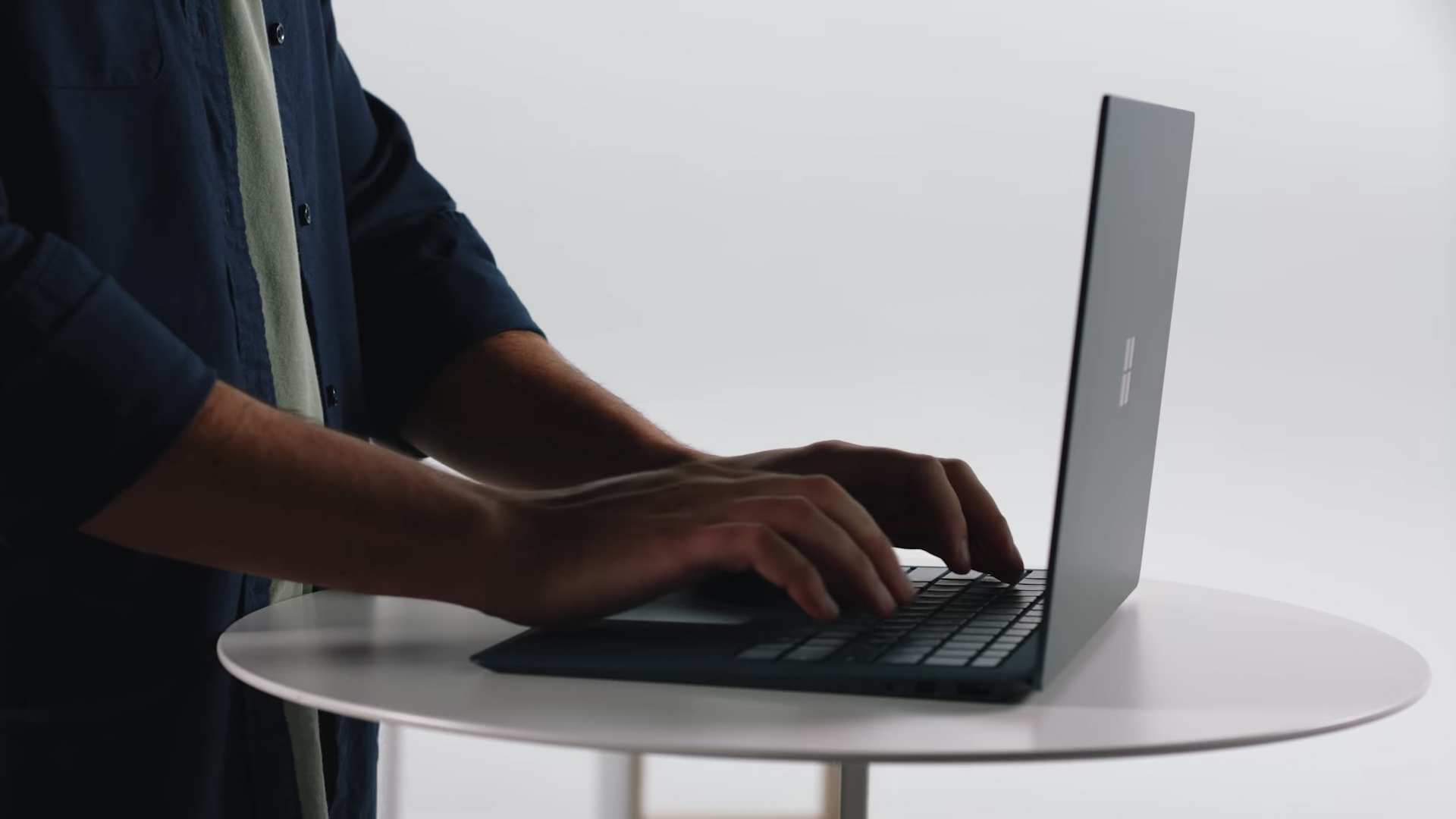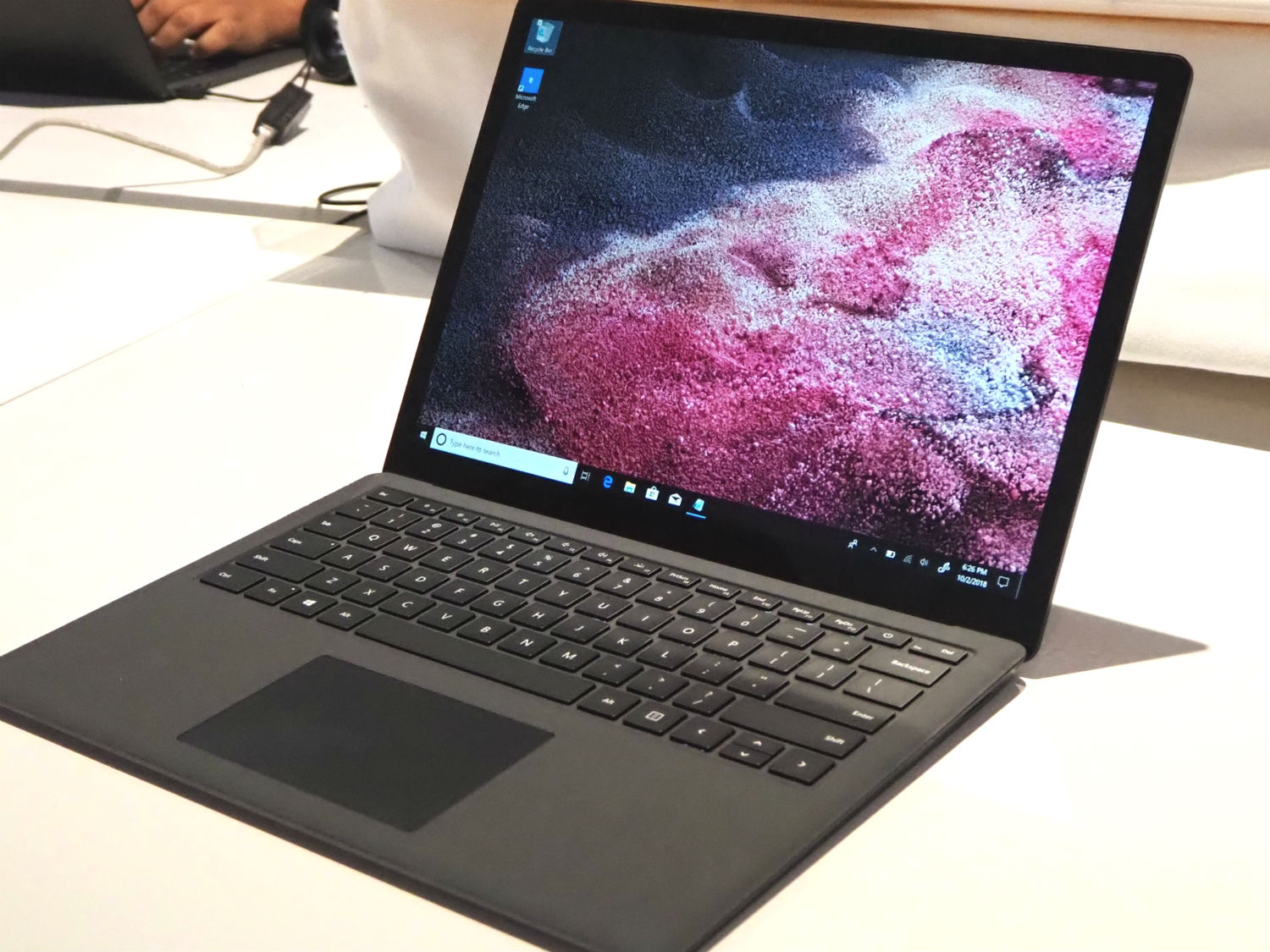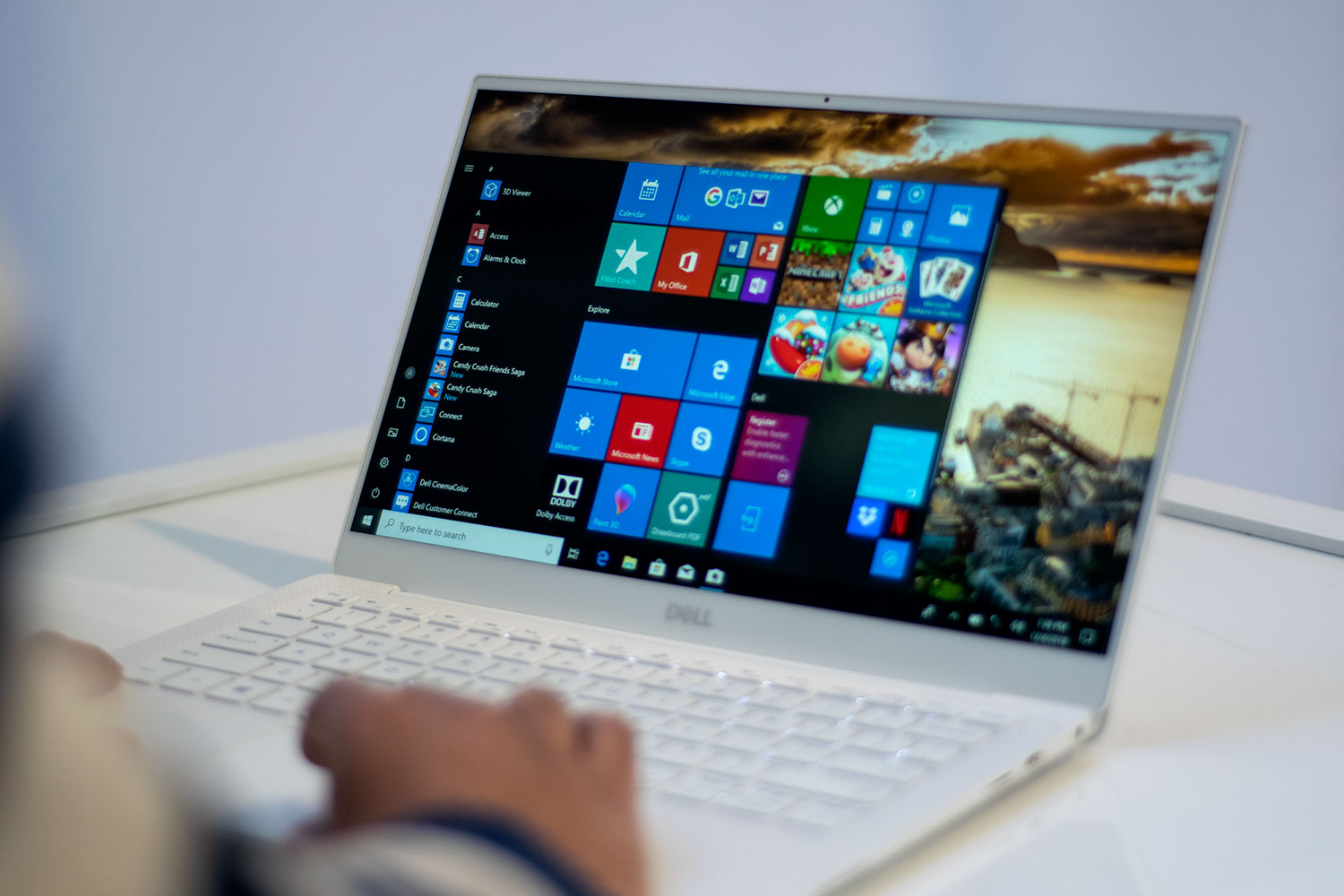
Microsoft just released an updated version of its traditional notebook, the Surface Laptop, with 8th-gen Intel CPUs and a new black color scheme. The Surface Laptop 2 is otherwise very similar to its predecessor, raising the question of whether improved internals are enough to compete with today’s strong group of 13-inch competitors.
Enter the Dell XPS 13, which received its own refresh and remains one of the best laptops. The Surface Laptop 2 looks good, but is it enough to take on the king of the hill? Read on to find out.
Design

The Microsoft Laptop 2 looks a lot like its predecessor, meaning that it’s a relatively thin notebook with an excellent all-aluminum build. It maintains the Alcantara fabric covering on the keyboard deck that both gives the notebook one solid color to match its metal chassis and also provides for a soft, luxurious feel. Overall, the Surface Laptop 2 is an attractive notebook that won’t be mistaken for any other.
Dell’s XPS 13 received a more subtle design update in its latest iteration, moving the webcam back up to the top bezel, picking up a new “Frost” exterior color option, and a new hinge which makes the laptop easier to open. That results in pretty much the smallest 13.3-inch notebook available, and Dell’s use of materials, like Gore insulation, ensures that the notebook keeps up the performance without melting down. Its white and rose gold color scheme adds some panache to an otherwise conservative aesthetic, while the newer brighter white woven texture material in the palm rest and keyboard deck offers a luxuriant feel that’s even better than the carbon fiber lining the deck of the black and silver version.
Regarding input options, the Surface Laptop 2 offers a lot to like. First, there’s the keyboard, which provides more than enough travel and a satisfying keypress that provides a for a very precise feel. Then there’s the Microsoft Precision touchpad and its smooth support for Windows 10’s full suite of gestures. The touch display is one of the best on a clamshell notebook thanks to Microsoft’s Pixelsense panel technology, and it also supports the Surface Pen. It’s a dubious distinction for a traditional notebook, but it’s there if you want it. You’ll also find the similar display options on the XPS 13, which comes with a non-touch 1080p panel, touch-enabled 1080p, and touch-enabled 4K panel.
The Dell’s keyboard has a relatively shallow keyboard that nevertheless provides a snappy, precise typing experience, and its own Microsoft Precision touchpad that works as well as any you’ll find on a Windows notebook. The 2019 XPS 13 allows its user to log in with Windows 10 Hello through a fingerprint reader on the power button, but the Surface Laptop 2 has a Windows Hello camera on board for facial recognition.
Performance

Both the XPS 13 and the Surface Laptop 2 can be equipped with Intel’s 8th-generation Core CPUs, which are fast and efficient. They’re both likely to provide more than acceptable performance for any productivity user. We haven’t tested the Surface Laptop 2 fully, but the XPS 13 was a fast performer in our testing and managed to keep its heat in check with its Whiskey Lake CPUs. We expect the same with the Microsoft notebook. We’ll note that the original Surface Laptop used slower SATA solid-state drives (SSDs) compared to the NVMe versions used in the XPS 13. Unless Microsoft upgrades storage as well, Dell is still fastest at accessing data with a read speed of 1,694 MB/s and write speed of 1,043 MB/s in our testing.
In terms of its display, the Surface Laptop 2 stands out among similarly sized notebooks. It utilizes a 13.5-inch IPS display running at a very sharp 3,000 x 2,000 (267 PPI) resolution in the productivity-friendly 3:2 aspect ratio that Microsoft champions. If it matches its predecessor, then it should offer the usual high contrast and brightness enjoyed by other Surface PCs. That compares to the XPS 13’s choice of Full HD (1,920 x 1,080 or 165 PPI) or 4K UHD display (3,840 x 2,160 or 331 PPI) resolutions that both offer good but not great contrast, slightly higher color gamut, and decent brightness. Though we didn’t fully review the Surface Laptop 2, we reviewed the 4K version of the XPS 13 and found images looked great on the display, but we still recommend sticking to the 1080p panel for longer battery life.
Portability

The Surface Laptop 2 isn’t the thinnest and lightest machine around, but it’s competitive at just 0.57 inches thick and roughly 2.76 pounds (depending on the CPU). It’s certainly not hard to carry around. It also offers 47 watt-hours of battery life, which isn’t terribly impressive, but the original Surface Laptop still did well enough in our suite of battery life benchmarks. It managed 12 and a half hours when looping our test video, and it lasted for over eight hours of web browsing. Those results placed the Surface Laptop among the better notebooks we’ve tested, and we expect better results with the Surface Laptop 2 thanks to its more efficient 8th-gen CPUs.
The Dell XPS 13 is an even thinner notebook, though, at 0.45 inches, and it leverages ultra-thin bezels to be as small as possible in its other dimensions. It’s the smallest 13.3-inch notebook on the market, in fact, although it’s also a bit dense at 2.68 pounds. That’s not heavy, and it beats out the Surface Laptop 2, but it’s not the lightest machine around either. The XPS 13 also does well in terms of its battery life, where the Full HD version lasted over 13 and a half hours playing video and over 10 hours browsing the web. The 4K version with 52 watt-hour battery lasted a less impressive 7 hours or so on our video test and 6 hours in web browsing but fell falls to the Surface Laptop 2, which Microsoft promises can last up to 14.5 hours in video playback.
Dell’s XPS 13 wins out for packing lots of power in a smaller chassis

Both of these are premium notebooks, coming in at $1,000 or more. The starts out at $1,000 for a Core i5, 8GB of RAM, and 128GB SSD in its Platinum color scheme, and maxes out at $2,700 for a Core i7, 16GB of RAM, and a 1TB SSD. The midrange also starts out at $1,200 for a Core i5 and a 128GB SSD, with 8GB RAM, but the display is the lower-resolution Full HD version. You’ll spend $1,860 for a Core i7-8550U, 16GB of RAM, a 512GB SSD, and a 4K display.
Both of these notebooks are good representatives in the 13-inch or so premium market. But the Dell XPS 13 is smaller and packs all of its power into a smaller chassis, making it the winner of this shootout.


